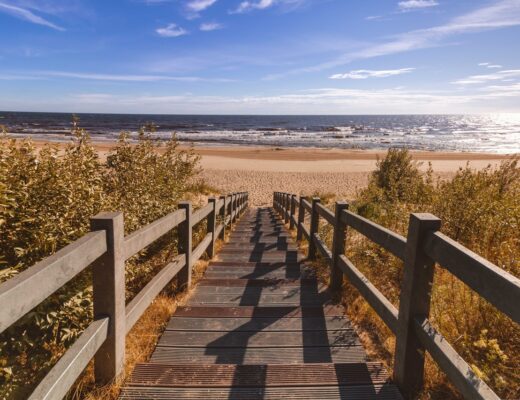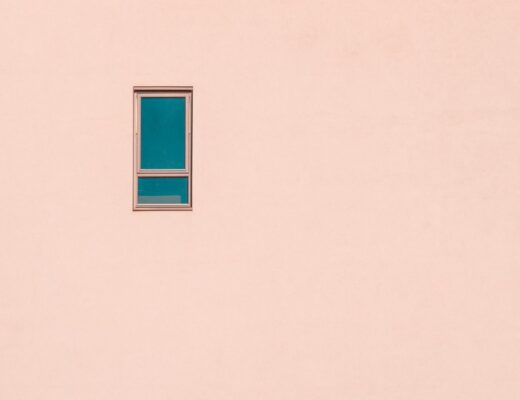Created by Mike & Mollie. Subscribe to our blog.
What is minimalism, really? For one, it’s a lifestyle rooted in simple living that has grown in popularity over the past two decades and continues to attract people searching for fulfillment in their lives.
But in practice, minimalism comes in many different flavors. Consider these 20 definitions and notice some of the themes that tie them together, as well as the different areas of emphasis that exist.
20 Definitions of Minimalism
- Minimalism embodies the art of simplifying and decluttering one’s physical and mental space.
- Embracing minimalism means finding contentment in simplicity and living with less.
- At its core, minimalism is a philosophy that urges mindful consumption and a focus on what truly adds value to one’s life.
- Minimalism encourages prioritizing experiences over possessions, valuing relationships, and fostering personal growth.
- In practice, minimalism promotes a clutter-free environment that fosters freedom and creativity.
- Minimalism involves letting go of excess material possessions and adopting a more minimalist approach to wardrobe and living space.
- Minimalism is a commitment to reducing waste and adopting eco-friendly practices in daily life.
- As a lifestyle choice, minimalism challenges consumerism and promotes sustainable living.
- The essence of minimalism is about reducing distractions and unnecessary commitments to pursue a simpler, more meaningful existence.
- Minimalism is a conscious choice to focus on what truly matters while eliminating the unnecessary.
- Minimalism encourages creating space for joy and purpose while eliminating what no longer serves you.
- Financially, minimalism is a journey towards freedom and reduced financial stress by living within one’s means.
- In design, minimalism values clean lines, simplicity, and functionality to create aesthetically pleasing spaces.
- Minimalism serves as a tool for reducing stress and anxiety by simplifying surroundings and obligations.
- It offers an escape from the cycle of consumerism and the discovery of happiness in non-material aspects of life.
- Minimalism promotes mindful consumption, avoiding impulse purchases, and focusing on long-term goals.
- Minimalism involves the intentional decluttering and organization of spaces to foster serenity and harmony.
- Minimalism acts as an antidote to the overwhelm of modern life, providing more time and energy for what truly matters.
- Living intentionally and making deliberate choices is at the heart of minimalism.
- Minimalism is a path to greater self-awareness, self-discovery, and a deeper appreciation for the present moment.
15 FAQs About Minimalism
If you’re still reading, you must be curious about minimalism. Great! Here are a list of 15 frequently asked questions around the subject, with a brief response to each one.
What is minimalism?
Minimalism is a lifestyle that emphasizes simplicity and focuses on the essentials in life, reducing clutter and distractions to enhance quality of life and personal values.
How do I start practicing minimalism?
Begin by decluttering your living space, focusing on keeping items that serve a purpose or bring joy, and gradually apply minimalist principles to other areas of life like finances and relationships.
Can minimalism help with stress?
Yes, minimalism can reduce stress by removing excess and distractions, creating a more peaceful and manageable environment, and allowing more time and energy for what truly matters.
Is minimalism just about getting rid of things?
No, it’s more than just decluttering; it’s about focusing on what’s essential and finding value in simplicity and intentionality in choices.
How does minimalism affect personal relationships?
Minimalism can positively affect relationships by reducing material distractions, allowing more quality time and meaningful interactions, and fostering deeper connections.
Can I be minimalist if I have kids?
Absolutely, minimalism with kids involves teaching them about valuing experiences over things, simplifying toys and belongings, and creating a structured yet flexible environment.
Does minimalism mean living in a tiny house?
Not necessarily; while some minimalists choose tiny houses, minimalism is more about the philosophy of less and can be practiced in homes of any size.
How does minimalism differ from frugality?
Minimalism focuses on simplicity and essentials, while frugality emphasizes economizing and reducing expenses. They can overlap but have different primary goals.
Can minimalism make me happier?
Minimalism can lead to happiness by reducing life’s complexities, focusing on meaningful activities and relationships, and fostering a sense of contentment with what you have.
How does minimalism impact the environment?
Minimalism encourages less consumption and waste, promoting environmentally friendly practices and a smaller carbon footprint.
Is it expensive to be a minimalist?
Not necessarily; while some minimalist products are pricey, the overall philosophy encourages less spending and more conscious consumption, which can be cost-effective.
How do I handle gifts as a minimalist?
Communicate your lifestyle to others, suggest non-material gifts like experiences, and graciously accept gifts with the understanding that you control what you keep.
Can minimalism help with mental health?
Yes, by reducing clutter and distractions, minimalism can create a more tranquil environment, lowering anxiety and improving mental clarity and focus.
Do minimalists have a certain style?
Minimalist style often features clean lines, simplicity, and a monochromatic color palette, but it’s subjective and can vary according to personal taste.
Is minimalism a lifelong commitment?
It can be, but it’s also flexible. Minimalism is a personal journey that can evolve over time, adapting to changes in life circumstances and priorities.
10 Easy Ways to Get Started with Minimalism
Now that we’re clear on what minimalism is, let’s talk about how to get started. Here are 10 of the quickest ways to start applying the principles of minimalism in your everyday life:
Declutter Your Space: Choose a room or category (like clothes, books, or kitchenware) and remove items you haven’t used in the past year. Donate, sell, or discard things that don’t add value to your life.
Rethink Your Purchases: Implement a 24-hour rule for all non-essential purchases. This waiting period helps you avoid impulse buys and ensures that what you buy is truly needed or valued.
Digitize Your Life: Convert physical documents, photos, and CDs to digital formats to reduce clutter. Opt for digital bills and unsubscribe from unnecessary physical mailings.
Embrace a Capsule Wardrobe: Reduce your wardrobe to a set of clothes you love and frequently wear. A capsule wardrobe simplifies choosing outfits and reduces laundry and storage needs.
Minimize Digital Clutter: Organize your digital spaces. Unsubscribe from unneeded email lists, delete unused apps, and keep your desktop and folders tidy.
Simplify Your Schedule: Prioritize your commitments. Say no to activities that don’t align with your values or bring you joy, creating more time for what matters most.
Practice Mindfulness: Engage in activities that clear your mind, like meditation, yoga, or journaling. Mindfulness helps in reducing mental clutter and staying focused on what’s important.
Quality Over Quantity: When making purchases, opt for fewer, higher-quality items that last longer, rather than a larger number of cheaper, disposable items. This approach is more sustainable and creates less waste.
Minimalist Home Decor: Embrace a minimalist aesthetic in your home. Choose simple, functional furniture and decorations. A clean, uncluttered space can lead to a clearer, more peaceful mind.
Review Your Finances: Simplify your finances by automating bill payments and streamlining your bank accounts. Focus on eliminating debt and consider a minimalist budgeting approach like the 50/30/20 rule (50% needs, 30% wants, 20% savings).
Remember, minimalism isn’t about living with as little as possible – it’s about making room for more of what matters. Start small and gradually incorporate these practices into your life.
Top 10 Blogs on the Minimalist Lifestyle
Before sending you off, let me share 10 great blogs that touch on the theme of minimalism. These are a great place to stay inspired and continue learning about the many ways that others have applied the principles of minimalism to their own lives.
- This Evergreen Home – Our personal blog, written by Mike and Mollie, and based on our experiences trying to live more simple, intentional, and relational lives while raising 4 young children.
- The Minimalists – Joshua Fields Millburn and Ryan Nicodemus offer practical tips and insights for living a meaningful life with less. Their blog is a rich resource for decluttering, simplifying finances, and finding happiness through minimalism.
- Becoming Minimalist – Joshua Becker’s blog focuses on the benefits of minimalism, including increased contentment and financial freedom. It provides resources like articles, podcasts, and books to help adopt a minimalist lifestyle.
- Zen Habits – Leo Babauta’s blog is centered on mindfulness, simplicity, and productivity. It offers valuable tips for living a more fulfilling life, including decluttering, meditation, and goal setting.
- Be More With Less – Courtney Carver’s blog provides simple guides to minimalism and personal growth, with content like “25 Ways to Simplify Your Life in 10 Minutes or Less” and “How to Build a Capsule Wardrobe.”
- Minimalist Baker – A food blog that offers easy-to-follow recipes with ten ingredients or less, requiring a single bowl or less than 30 minutes to prepare. It’s ideal for those with dietary restrictions.
- Minimalist Journeys – Paul and Sandra’s blog provides 24/7 guidance on how to declutter your home, life, and raise minimalist kids.
- Rich in What Matters – Julia believes the secret to rich living has nothing to do with financial wealth and that the most important things in life aren’t things.
- Mnmlist – A stripped down blog that is no longer active, but maintains an incredible archive of well-written essays on the essence of living simply and deeply in this modern world.
- Minimalist.travel – Mose Hayward’s blog is a go-to for travel tips, including how to save money and energy while traveling, staying safe, and quickly learning new languages.
I hope this little guide has been useful, and a fairly comprehensive answer to the question, what is minimalism? Feel free to explore the archives of our blog to read even more of what we’ve written on the subject.
🌿 Introducing, Declutter Your Life, a premium newsletter with monthly challenges to help you live a less cluttered life– inside and out.




